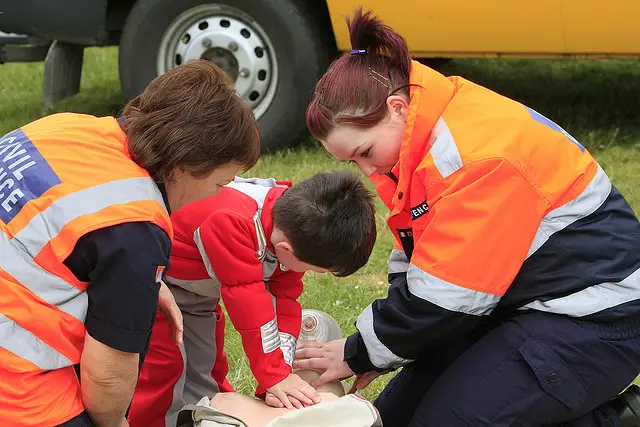This in from the IW NHS, in their own words. Ed
The Isle of Wight NHS Trust Ambulance Service is supporting European ‘Restart a Heart Day’.
Ambulance Service staff will be demonstrating how anyone can help to restart a heart by following simple guidelines endorsed by the European Resuscitation Council (www.erc.edu).
Where: Main Entrance, St. Mary’s Hospital, Parkhurst Road, NEWPORT, PO30 5TG
When: Friday 16th October 2015
Time: 9:30am to 4pm
John Howard, aged 78, says:
“On 3rd June this year whilst walking in Shanklin Old Village I suffered a cardiac arrest. A passing GP, Dr Katie Thomas, came to my aid and commenced CPR. An unknown member of the public collected a defibrillator from the nearby Shanklin Theatre; this was used to shock my heart back into action.
“The chances of a medical professional being on hand and a defibrillator being available nearby when a cardiac arrest occurs are low and, given that for every minute the heart is stopped the chances of survival diminish by 10%, I realise that I am very fortunate to be alive.
“My message is that what happened to me could happen to you or your loved ones. I urge everyone to take the opportunity to learn to administer CPR.”
Louise Walker, Community Training Manager for Isle of Wight NHS Trust’s Ambulance Service says,
“A cardiac arrest can happen to anyone, at any time and in any place. There are some simple steps that even children can learn to help save someone’s life. Don’t leave it to chance that someone else will know how to recognise cardiac arrest and give CPR.”
Information on CPR can be found on the NHS Choices website. Cardio-Pulmonary Resuscitation (CPR) is a first aid technique that is needed if someone is unconscious and not breathing normally.
Chest compressions and rescue breaths keep blood and oxygen circulating in the body.
If someone is unresponsive and not breathing normally, call 999 or 112 for an ambulance. Then, if you can, start CPR straight away.
Hands-only CPR
If you have not been trained in CPR or are worried about giving mouth-to-mouth resuscitation to a stranger, you can do chest compression-only (or hands-only) CPR.
To carry out a chest compression:
- Place the heel of your hand on the breastbone at the centre of the person’s chest. Place your other hand on top of your first hand and interlock your fingers.
- Position yourself with your shoulders above your hands.
- Using your body weight (not just your arms), press straight down by 5–6cm on their chest.
- Repeat this until an ambulance arrives.
Try to perform chest compressions at 100-120 chest compressions a minute.
When you call for an ambulance, telephone systems now exist that can give basic life-saving instructions, including advice on CPR. These are now common and are easily accessible with mobile phones.
More information is available on CPR with rescue breaths, CPR for children and CPR for babies.
Links
Find out more about:
‘Restart a Heart Day’
European Resuscitation Council
NHS Choices Website





